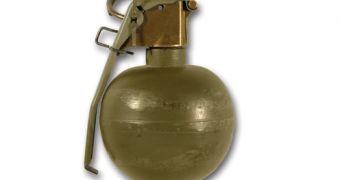Explosives are usually the last thing sane doctors would associate with healing people. But scientists who watch too many movies came up with the idea of creating microscopic explosives, to be used for a more potent dispersal of drugs near a targeted organ or group of cells. They say that this method will greatly reduce the spread time of many blood-carried drugs. A mini-explosion would be painless to the patient, but it would push the drug inside in all directions at great speed.
The grenade is actually made up of a polymer coating surrounding a gel based on a specific kind of sugar, called dextran. Once the microscopic explosive is placed in water, the porous membrane allows water in, which binds with the gel and forces the chemical connections between its elements to break. When that happens, the whole device swells and eventually bursts outwards, spreading its content around.
Presumably, these delivery systems will carry very tiny particles, of up to about 200 nanometers in size. These particles can penetrate cellular membranes and nuclei with ease, but diffuse very slowly in tissue, which severely limits the way in which they can be used. Scientists want to make these carbon particles the carriers of drugs, and then load the mix into the polymer covered molecule. If their experiment succeeds, doctors could have a more efficient means of delivering the drugs to an affected area anywhere in the patient's body.
Thus far, the designers of the device, working from the Ghent University in Belgium, have managed to establish that the bloodstream could be a poor delivery system for their grenade, so they thought of implanting the particle below the skin, over the area that needs the treatment. "For the purpose of vaccination, the subcutaneous region is an ideal place for antigen delivery," says study leader, Bruno de Geest.
The team explains that the micro-particle isn't nearly strong enough to cause any kind of pain or discomfort to the patient. The complex will have particles ranging from 100 to 400 nanometers in size, making them extremely small and harmless. Future research plans include the development of intelligent polymer membranes that could identify specific tissue and direct the force of the explosion towards it.

 14 DAY TRIAL //
14 DAY TRIAL //